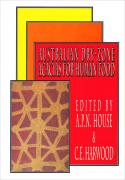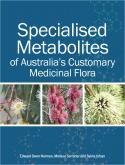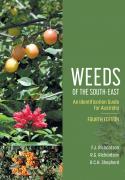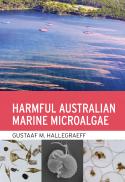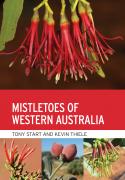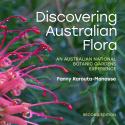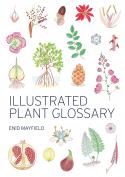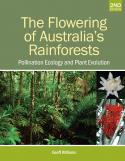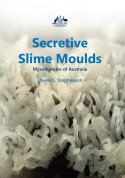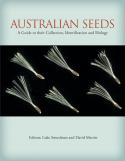Australia's unique and diverse woody flora has become socially, economically and environmentally important in many other countries. The seed of some Acacia species showing promise in planting programs in semi-arid areas has been a part of the traditional diet of Australia's Aboriginal people. The dry seed may be ground to flour, mixed with water and eaten as a paste or baked to form a cake. Forest tree breeding has focussed on wood production, selecting taller, faster-growing varieties.
The same principles of selection and improvement can be applied to improve seed yields and nutritional properties of shrubs. The selection criteria would include seed characters such as taste, seed coat thickness and nutritive value to maximize their food value. The book looks at the possibility of building upon the traditional knowledge of Aboriginal Australians, using modern scientific methods, for the benefit of people in the world's dry areas.
Australian Dry-zone Acacias for Human Food documents the proceedings of a workshop held at Glen Helen, Northern Territory, Australia. The purpose of the meeting was to examine the idea of developing the food value of the seed of Australia's dry-zone acacias.
This book covers a summary of the workshop conlcusions, the invited papers, and recommendations of the working groups.
- Page 3Abstract
Based on reports of their utilization as food by Aborigines and other salient features, this review has identified 44 species of Acacia from Australia’s subtropical dry-zone which have potential for production of human food. Information on each of these species, including important components of their natural distributions (climate and soils), growth characteristics and their taxonomic relationships to other Acacia species has been tabulated. Three species in section Juliflorae, viz. A. colei ms, A. cowleana and A. tumida, appear to have outstanding potential for production of human food in the Sahelian zone of sub-Saharan Africa. These species have already demonstrated rapid growth and early production of heavy, easily harvested and utilized seed crops when planted on otherwise nonarable lands in West Africa. Other promising Juliflorae acacias for human food include A. adsurgens, A. sp. aff. cowleana and A. oligophleba. Two species in other sections, viz. A. coriacea var. pendula (section Plurinerves) and A. glaucocaesia (a close relative of A. victoriae, section Phyllodineae), have very high potential for production of human food but have yet to be evaluated outside Australia.
There is an urgent requirement for thorough biochemical analyses, especially possible anti-nutritional or toxic components, of the seeds of those species with greatest human food potential. There is also an important need for biosystematics studies to be undertaken on species and species groups of high potential socioeconomic importance (e.g. A. holosericea group, A. tumida, A. coriacea, A. victoria group). These studies must be based on comprehensive and well-documented seed collections.
- Page 37Abstract
Traditionally, Aboriginal people in central Australia used at least 49 species of Acacia. Of these, the majority (80%) provided edible seed. Processing the mostly hard-cased Acacia seeds was an arduous task involving repeated parching, pounding, grinding and yandying. The survey of published material presented in this paper revealed a lack of detailed knowledge for any particular Acacia species. It suggests that further assistance be sought from Aboriginal people on the species targeted by the project. The research project proposed should not only formally recognize the contribution of Aboriginal traditional knowledge but must seek to involve contemporary Aboriginal people.
- Page 54Abstract
Present knowledge of the composition of Australia’s dry-zone acacias, including previously unpublished data, is presented in this paper. A total of 58 separate samples, representing 26 different species, have been analysed. On average, acacia seeds are about 23% protein, 26% available carbohydrate, 32% fibre and 9% fat, the latter being the most variable. More reliable data are needed for starch and fibre. Acacia seed oils contain large amounts of polyunsaturated and monounsaturated fatty acids. New food products based on acacia seeds are being marketed. Protease inhibitors and haemagglutinins are unlikely to present a hazard if adequate heat treatment is used during processing but little is known about other factors which may compromise long term safety. Chemical analysis and animal studies of protein quality and mineral bioavailability are needed, particularly if only one or two species are singled out for development as a major food source.
- Page 68Abstract
In this short paper I describe my own experiences of collecting dry-zone Acacia species from central Australia, and the importance of using Aboriginal knowledge of the species.
- Page 74Abstract
Starch-gel electrophoresis was used to determine allozyrne variation within Acacia holosericea sens. lat. and A. cowleana from northern Australia. Three isozyme races of A. holosericea were identified (corresponding to three ploidy levels). Almost without exception all individuals within populations had identical genotypes. Populations within each race occupy distinct geographic areas. In A. cowleana there was almost no genetic variation either within or between populations. The implications of these results for tree improvement programs are discussed.
- Page 82Abstract
Dry-zone Australian acacias were introduced to the Sahel in the early 1970s. A few species such as A. colei ms and A. holosericea have shown a good potential in plantations for fuelwood production or environmental protection. New species and provenances collected from inland dry tropical areas of Australia were introduced in trials in 1985–86 for assessment in continental areas, in Burkina Faso, Niger and North Cameroon. Results show that despite their potential qualities the newly introduced species are not very interesting mainly because of their poor adaptation. A. cowleana yields less than A. colei ms without being more resistant to drought as expected. However, new good inland provenances of A. cold ms were identified.
- Page 93Abstract
This paper briefly describes Faidherbia albida, its natural distribution and use of boiled seed as food for people during famine periods. The pods, leaves and tender twigs are important sources of fodder for both domestic and wild animals. Pod and seed productivity varies greatly, but pod yield can be as high as 5 400 kg ha-1. Variation in palatability, as indicated by selective browsing by wild animals, is attributed to prussic acid toxicity. Improperly cooked F. albida seed may give rise to gastric disorders; a suitable method for preparing seed for human consumption is given. Use of the seed as food and its palatability are discussed in terms of genetic improvement programs.


